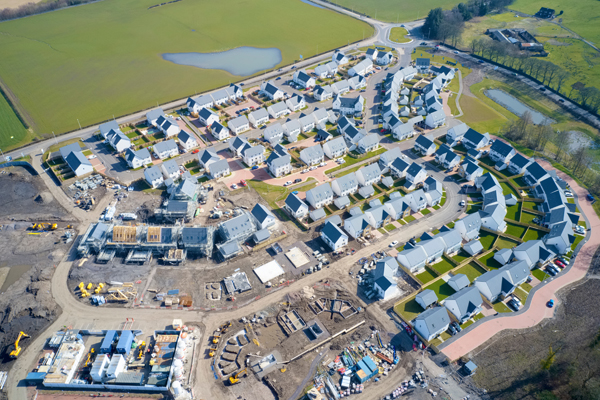The housing shortage has its roots in the 1980s. It’s hard to believe that in 2023 there is still a chronic shortage of social housing. More people than ever before are battling to find a safe and secure place to live. Nonetheless, STILL we do not build enough social housing. Over a million households are on the waiting list for social housing. According to Shelter, 29,000 social homes were sold or demolished last year, whilst only 7,000 new ones were erected. Housing Association Magazine Editor Joe Bradbury investigates:
Did you know, there are presently 1.4 million fewer households in social housing in England than there were in 1980? As a result, millions of households have been driven into the private rental sector, which has more than doubled in size over this period.

We don’t have enough housing
A place to live is a basic human requirement. However, it’s a sad fact that in 2023 there are just not enough good quality, low-cost homes available right now for everyone who needs one. Coupled with that, in England, social housebuilding is at its lowest level in decades. There has been an average annual net loss of 24,000 social housing since 1991.
To give perspective, in 1990, there were 28,000 social homes built. In 2020, there were less than 7,000 social homes built. In fact, housebuilding overall has halved in 50 years. In the 1960s, there were 3 million homes built. In 2010s, only 1.3 million homes were built.
This has led to a distinct rise in homeless and temporary accommodation (TA) households. 40,000 households were registered homeless in 2019-20. By 2020, this number had more than doubled to 95,000 households in TA.
Unaffordable housing
Many people around the country are affected by the housing crisis. People are obliged to take what they can afford because they are priced out of owning a home and are refused social housing; even if it’s humid, claustrophobic, or far from jobs and support networks.
Unfortunately, in this day and age we rely on the private sector to construct the majority of housing sorely needed in Britain today… and the private sector’s goal is to make a profit. When fewer people can afford to buy their own home, the quantity of properties sold by developers decreases. As a result, developers construct fewer homes.
Affordable housing
Since 1990, developers have been required to contribute approximately one-quarter of new construction as Affordable Housing as part of their plans (AH). When private developers do not create houses, we lose out on social housing as well.
Since 2000, successive governments have recognised that too few homes are being built and have established an annual target of 250,000 new homes. This goal is missed every year. We are now currently almost 1.5 million homes short.
The effect on social housing
Because affordable housing is reliant on developer contributions, when fewer homes are created, social housing levels fall. Since the 1980s, private developers have built consistently fewer homes. Worse still, the government has abandoned social housing delivery to the private sector in the hope that profit-seeking developers will construct social housing as part of their planning permit.
The Government now gives relatively little direct funding for social housing. That policy has clearly failed, and it is the primary reason for the current social housing shortage.
People are being forced to live in unsuitable homes due to this shortage.
Because of the social housing scarcity, many low-income persons who should have access to the social rented sector have been forced to live in the private rented sector instead. This forces hundreds of thousands of people into untenable situations, such as overcrowding or temporary housing (including hostels and bed and breakfasts).
People are also at risk of becoming homeless or living on the streets because they cannot afford the private renting market.
While the demand for social housing is increasing, the number of homes built is decreasing. And, while the government has spent money on so-called ‘affordable’ housing — homes that aren’t genuinely affordable to the majority of people – it has failed to invest enough in social housing.
Every year, we lose social housing in England as a result of Right to Buy sales and demolitions. And there are now 1.4 million fewer households in social housing than in 1980.
In summary
There are over a million households currently on social housing waiting lists in England. Unfortunately, the current chronic shortage of social homes means there aren’t even enough for the people who most urgently need it - those facing street homelessness and families. Let’s build a better future in 2023 and call on the government to build social housing.
This article and other blog’s by Joe Bradbury appear regularly on Mitsubishi Electric’s The Hub, visit les.mitsubishielectric.co.uk/the-hub
- Log in to post comments













